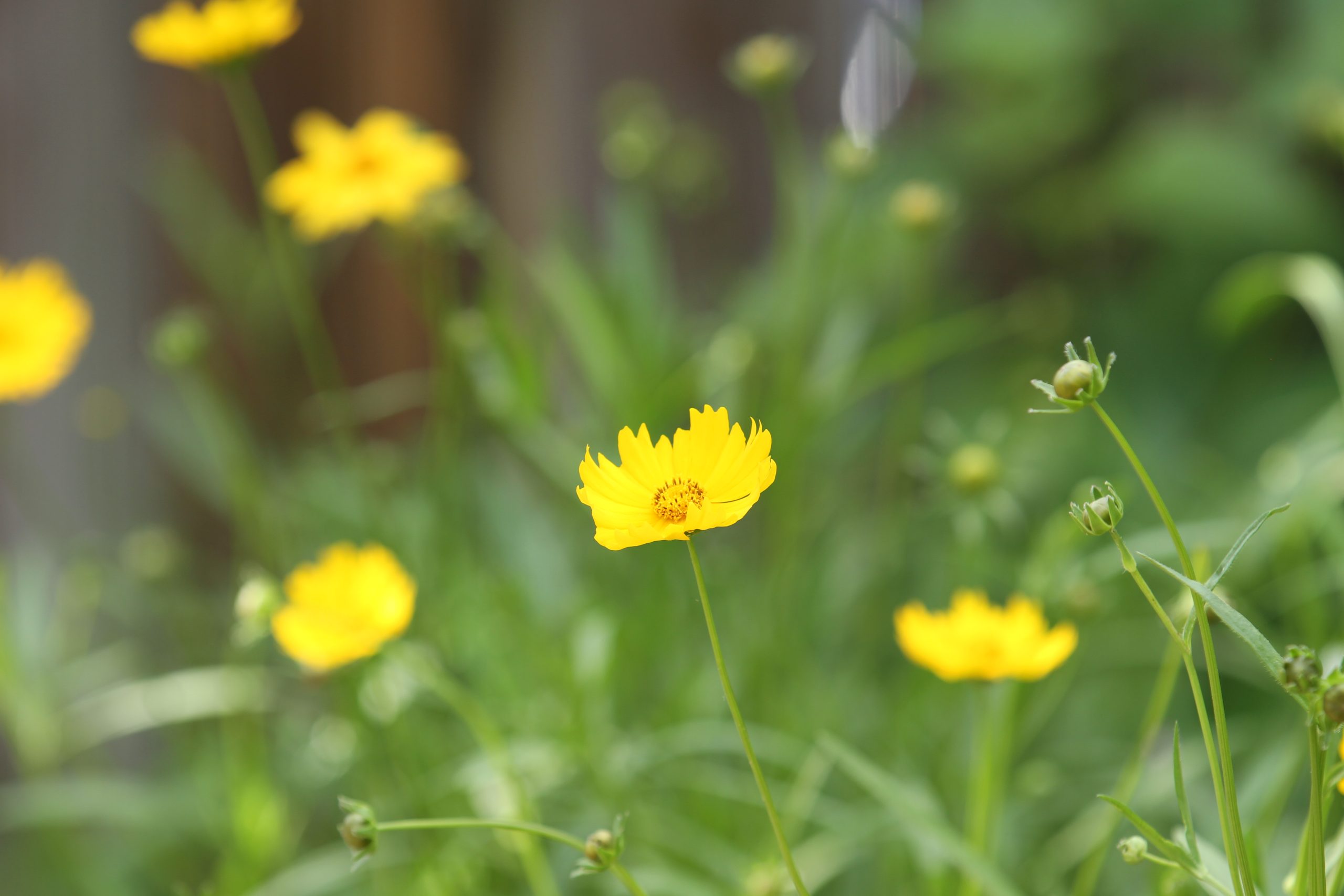Native plants make life easier
Starting a native plant garden in Arkansas is easier than you think! Native plants are naturally adapted to the local environment, meaning they practically take care of themselves once established. They’re resilient, low-maintenance, and support local wildlife, making them the perfect choice for both beginner and experienced gardeners. This guide walks you through planning, planting, and establishing your garden, helping you create a thriving, sustainable landscape with minimal effort.
Cottage Style
Grouping plants in clusters of 3 to 10 creates a fuller, more natural look. It also helps suppress weeds, retain moisture, and support local wildlife. This technique works well with plants like Purple Coneflowers, Little Bluestem, and Butterfly Weed. Many prairie plants naturally grow close together, and this approach mimics their natural habitat while maintaining a neat and intentional design.

Planning Your Garden/Landscape
Lay out the plants before planting; don’t bury them. This helps you visualize the arrangement and make adjustments as needed. Organize them by height to create a natural look.
Prairie plants thrive in full sun, so aim for at least 6 to 8 hours of direct light. If you’re planting under a tree, it’s usually fine; light can filter through at lower angles. Savanna trees, in particular, allow more sunlight to pass through than denser species.
For shaded areas, choose woodland or forest species. Spring ephemerals, shade-loving grasses, and sedges are excellent options. Most of the plants we sell don’t require special watering considerations, but aquatic and riparian species should be placed near areas where water naturally collects.
If a plant prefers dry conditions, ensure the site drains well — upland areas are ideal. If you have exposed sandstone, limestone, or siltstone, those locations can be perfect for plants that occur on barrens, such as Solidago odora, Liatris squarrulosa, Asclepias verticillata, and Coreopsis grandiflora, to name a few. With native plants, it’s hard to go wrong, so trust the process and don’t overthink it.
Planting
Dig a hole slightly larger than the pot and gently loosen the outer roots. Place the plant in the hole, then backfill with soil, making sure to eliminate any air pockets. Finish by giving it a deep, thorough watering to help the roots recover from transplant shock and to settle the soil securely around them.
Establishment
After planting, water your plants deeply every day until they establish and start showing new growth. Once they’re settled, you can ease off on the watering. Don’t worry if you spot a few caterpillars or snails. They’ll give your plant a light pruning, which won’t cause harm. If the plant develops too much leafy growth, consider pruning it back to help conserve moisture.
Good Beginner Plants
- Purple Coneflower
- Pale Purple Coneflower
- Little Bluestem
- Butterflyweed
- Lanceleaf Tickseed
- Grey-headed Coneflower
Prairie/sunny
- Butterflyweed
- Pale Purple Coneflower
- Wild Bergomont
- Dwarf Blue Indigo
Barren/Rocky
- Pale Purple Coneflower
- Grass-leaved Prairie Aster
- Largeflower Tickseed
- Many-Rayed Aster
Forest and woodland/shady
- Columbine
- Eastern Shooting Star
- Tall Bellflower
- Solomon’s Seal


Leave a Reply